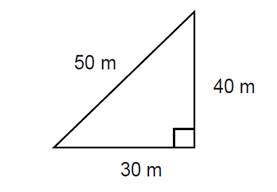
تاريخ الفيزياء

علماء الفيزياء


الفيزياء الكلاسيكية

الميكانيك

الديناميكا الحرارية


الكهربائية والمغناطيسية

الكهربائية

المغناطيسية

الكهرومغناطيسية


علم البصريات

تاريخ علم البصريات

الضوء

مواضيع عامة في علم البصريات

الصوت


الفيزياء الحديثة


النظرية النسبية

النظرية النسبية الخاصة

النظرية النسبية العامة

مواضيع عامة في النظرية النسبية

ميكانيكا الكم

الفيزياء الذرية

الفيزياء الجزيئية


الفيزياء النووية

مواضيع عامة في الفيزياء النووية

النشاط الاشعاعي


فيزياء الحالة الصلبة

الموصلات

أشباه الموصلات

العوازل

مواضيع عامة في الفيزياء الصلبة

فيزياء الجوامد


الليزر

أنواع الليزر

بعض تطبيقات الليزر

مواضيع عامة في الليزر


علم الفلك

تاريخ وعلماء علم الفلك

الثقوب السوداء


المجموعة الشمسية

الشمس

كوكب عطارد

كوكب الزهرة

كوكب الأرض

كوكب المريخ

كوكب المشتري

كوكب زحل

كوكب أورانوس

كوكب نبتون

كوكب بلوتو

القمر

كواكب ومواضيع اخرى

مواضيع عامة في علم الفلك

النجوم

البلازما

الألكترونيات

خواص المادة


الطاقة البديلة

الطاقة الشمسية

مواضيع عامة في الطاقة البديلة

المد والجزر

فيزياء الجسيمات


الفيزياء والعلوم الأخرى

الفيزياء الكيميائية

الفيزياء الرياضية

الفيزياء الحيوية

الفيزياء العامة


مواضيع عامة في الفيزياء

تجارب فيزيائية

مصطلحات وتعاريف فيزيائية

وحدات القياس الفيزيائية

طرائف الفيزياء

مواضيع اخرى
Vectors and Scalars
المؤلف:
Professor John W. Norbury
المصدر:
ELEMENTARY MECHANICS & THERMODYNAMICS
الجزء والصفحة:
p32
7-3-2016
3074
Vectors and Scalars
When we considered 1-dimensional motion we only had two directions to worry about, namely motion to the Right or motion to the Left and we indicated direction with a + or - sign. We found that the following quantities had a direction (i.e. could take a + or - sign): displacement, velocity and acceleration. Quantities that don't have a sign were distance, speed and magnitude of acceleration. Now in 2 and 3 dimensions we need more than a + or - sign. That's where vectors come in. Vectors are quantities with both magnitude and direction. Scalars are quantities with magnitude only. Examples of Vectors are: displacement, velocity, acceleration, force, momentum, electric field Examples of Scalars are: distance, speed, magnitude of acceleration, time, temperature Before delving into vectors consider the following problem.
Example Joe and Mary are rowing a boat across a river which is 40 m wide. They row in a direction perpendicular to the bank. However the river is °owing downstream and by the time they reach the other side, they end up 30 m downstream from their starting point. Over what total distance did the boat travel?
Solution Obviously the way to do this is with the triangle in Fig. 1.1, and we deduce that the distance is 50 m.

FIGURE 1.1 Graphical solution to river problem.